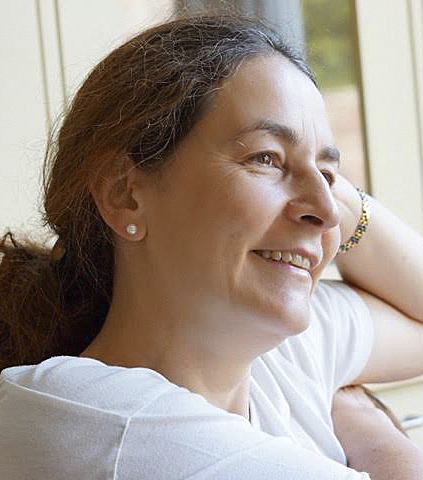Mussorgsky's Pictures at an Exhibition exists in two forms: the composer's original version, for solo piano, and Ravel's later orchestration. Here, we'll take a look at the genesis of the original piano piece - and some of its finest recordings.
- More recommendations for best recordings of the greatest classical works
What is Mussorgsky's Pictures at an Exhibition about?
Written in 1874, Pictures at an Exhibition is Mussorgsky’s only piano masterpiece: a tribute to his deceased friend, the artist and architect Viktor Hartmann. The suite of extraordinarily vivid miniature tone poems was composed after visiting a display of Hartmann's work at the Imperial Academy of Arts in Saint Petersburg - not long after the artist's sudden death.
Ten musical ‘pictures’, suggested by Hartmann’s, are interspersed with ‘promenades’ leading from painting to painting. From children playing in the gardens of the Tuileries to a catacomb of skulls; from unhatched chicks to Russian folklore’s chief witch, Baba Yaga, all of life is here.
Two ways to hear Pictures at an Exhibition
There are two performing traditions: one pays scrupulous attention to the text; the other freely ‘pianostrates’ it (Vladimir Horowitz’s term) with extra effects. What’s vital is that the pianist is true to Mussorgsky’s spirit, steeped in Russian 19th-century Realism. That spirit makes Pictures a gift to an imaginative performer.
This great work was later orchestrated by various composers. The most famous orchestration was made by Maurice Ravel in 1922. Sir Henry Wood, founder of the Proms, had previously made an orchestration in 1915 - but when he heard Ravel's transcription, he found it so superior that he wouldn't allow his own orchestration to be performed!
By the way, you can hear the orchestral version of Pictures at an Exhibition at the 2024 BBC Proms. It's being performed by the City of Birmingham Symphony Orchestra and conductor Kazuki Yamada for Prom 43 (Thursday 22 August).
What is the best recording of Pictures at an Exhibition?
Sviatoslav Richter: The Sofia Recital (1958)
Phillips 464-7342
The recording of Sviatoslav Richter, live in recital in Sofia in 1958, is a legend, and with good reason. Sound quality is poor – rumbly, crackly, audience-laden – but there’s an overriding sense that we’re witnessing Richter manage that extreme rarity: the realising of an ideal.
This towering Russian pianist made it his mission to convey Mussorgsky exactly as written, but to embody in his performance of the unadulterated score all the emotion and philosophical great-heartedness that others try to achieve through embellishment.
'Some of the most extraordinary piano playing you could hope to hear'
His interpretation offers what the filmmaker Bruno Monsaingeon described as a ‘wild and intractable purity’. It’s some of the most extraordinary piano playing you could hope to hear. His ‘Catacombs’ magically transforms every chord into a great cave, seeming to achieve that supposed pianistic impossibility, a crescendo in mid-resonance.
Read more about the great Russian composers
‘Baba Yaga’ has a terrifying, pagan, monolithic power – contrast this with the delicacy of the unhatched chicks and the innocence of the Tuileries children. In the grand finale, the radiant carillon of Kiev and the evocation of Russian orthodox choirs behind cathedral screens are unforgettable. There’s a conceptual scale to Richter that goes beyond what most pianists can imagine.
Three more great recordings of Pictures at an Exhibition
Vladimir Horowitz (1948)
RCA Red Seal 88697538852
Next is Vladimir Horowitz – Richter’s nemesis. It was largely due to his influence that so many pianists muck about with the score (‘They said I put graffiti on Mussorgsky, but I don’t give a damn,’ Horowitz once remarked.). In his historic live performance at Carnegie Hall in 1948, his intensity sweeps all before it as he extends the music’s range at the piano’s extremities – and centre – from the first Promenade.
‘Gnomus’ and ‘Bydlo’ become terrifying invocations, the former laden with extra rumblings and carved-out detail, the latter showing every gradation of crescendo and diminuendo. He conjures impressions of infinite instrumentation – try his second Jew, Schmuyle, whose tone is a trumpet despite the piano. Baba Yaga flies with demoniac glee, causing mayhem and mutiny; and when the bells ring over the Great Gate it’s as if you’re up in the tower beside them.
- Horowitz featured highly in our list of the 20 greatest pianists of all time
Mikhail Pletnev (2000)
Virgin Classics 482 0552
Mikhail Pletnev’s recording is an account of staggering imagination and sonic manipulation that leaves most others dithering at the starting line. His pedalling is especially astounding, extending sonorities from the end of one section beneath great chunks of what follows, without creating actual mess.
His distortion of the bells in ‘The Great Gate of Kiev’ will either seriously unsettle you or leave you gasping. Yet there’s something so icily detached about him that the whole impression is nearly clinical – magnificent though the playing is, he seems to lack the essential humanity that’s amply present in Horowitz and Richter.
Vladimir Ovchinnikov (1990)
Piano Classics PCL0004
Beyond the three recordings so far mentioned here lies a plethora of accounts that I’d hate to describe as ‘lesser’. I love Lazar Berman’s deep, rich, compassionate account, Rudolf Firkusny’s magisterial concert from 1980, and the mercurial Shura Cherkassky recorded live at the Wigmore Hall aged 73.
Leif Ove Andsnes ‘pianostrates’ extensively in his ‘Pictures Reframed’, but does so with flair and originality. Among younger musicians, Sa Chen offers impressive range.
Still, I’d single out Vladimir Ovchinnikov – a one-time top prizewinner at the Leeds and Tchaikovsky international competitions, he’s shockingly underrated today. His recording is hugely sympathetic, the latter-day ‘Russian school’ approach at its best, with rich tone quality, real compassion in the darker aspects of the music, and marvellous control of colour – just witness the magical transformation of tone from ‘Baba Yaga’ into the ‘Great Gate of Kiev’.
